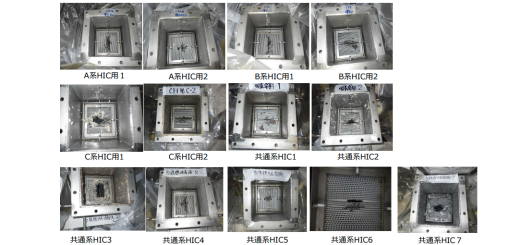News Watch
Strategic Energy Plan and Other Cabinet Decisions
Japan’s government adopted the 7th Strategic Energy Plan on February 18 together with the GX2040 Vision and Plan for Global Warming Countermeasures in cabinet decisions.
“GX” is a term of Japan’s own coinage, which the Ministry of Economy, Trade and Industry (METI) defines as follows: “GX is an abbreviation of ‘green transformation.’ In simple terms, it means innovations that minimize the use of fossil fuels as much as possible while utilizing clean energy, and activities toward achieving this goal.” The GX2040 Vision consists of taking steps toward implementing GX-related policies, reviewing their status, and so on.
The Plan for Global Warming Countermeasures has been formulated with the ambitious goals of reducing greenhouse gas emissions by 60% by FY 2035 and 1.5℃ by 73% by FY 2040 from their 2013 levels, consistent with the 1.5 target in the upcoming term of Nationally Determined Contributions.
For more on Japan’s Strategic Energy Plan, see CNIC’s statement at cnic.jp/english/?p=8203
Kanden’s Spent Fuel Building up, Plans to Ship it to France
The Federation of Electric Power Companies and Kansai Electric Power Co. (Kanden) announced on February 12 that they would double the amount of spent nuclear fuel that they plan to ship to France to about 200 tons per shipment, for about 400 tons in total.
The Federation of Electric Power Companies (FEPC) announced in June 2023 that it will conduct a demonstration study in France with the aim of early establishment of reprocessing technology for spent MOX fuel. The 11 companies that own nuclear power plants (NPPs) in Japan will be the main operators of the demonstration study, and the relevant technology will be outsourced to the Japan Atomic Energy Agency (JAEA) and Japan Nuclear Fuel Limited (JNFL), while reprocessing work will be once again outsourced to Orano SA in France. At that time, the plan was to ship about 200 tons of spent fuel from Kanden. That was to consist of about 10 tons of spent MOX fuel and about 190 tons of spent uranium fuel, with plans to mix and reprocess them. The amount has been doubled now, such that it amounts to about 20 tons of spent MOX fuel and about 380 tons of spent uranium fuel.
The reason for this, explains FEPC, is that “From the standpoint of optimizing the actual reprocessing operations by Orano in France, who in the course of their discussions have confirmed detailed specifications of the spent MOX fuel owned by Kanden, there was a proposal to increase the quantity of material for empirical research so as to enhance the amount of data acquired, given the nature and characteristics of the spent MOX fuel.” In fact, however, it is thought really to be a measure for dealing with Kanden’s spent fuel. Kanden has repeatedly broken its promises to deliver that to interim storage facilities outside Fukui Prefecture. In October 2023, it provided the prefecture a “roadmap for spent fuel measures,” which included removal of about 200 tons of it to France, but the first countermeasure listed was transference of the spent fuel to the Rokkasho Reprocessing Plant. This was deemed ineffective due to postponement of the plant’s completion. So, they presented a new roadmap to the prefecture on February 13, 2025, which included the doubled amount to be shipped to France. This new roadmap also anticipates the Rokkasho Reprocessing Plant beginning to accept spent fuel starting from 2028, and many in the prefectural assembly are voicing doubts over the plan’s effectiveness, but the governor has accepted it.
Fukui Prefecture Promoting Nuclear Recycling Enterprise
Fukui Prefecture announced its initial budget proposal for FY2025 on February 14. In it, 1.02 billion yen (a 51% capital investment) was allocated to establishing a new enterprise to engage in a “nuclear recycling business promotion project.” The enterprise will collect iron and stainless steel scrap metal from the NPPs in the prefecture and in one consolidated location perform sorting, decontamination, cutting and radioactivity measurement. Japan’s Nuclear Regulation Authority (NRA) will work on the behalf of the electric power companies to carry out treatment of the materials that emerge until they can be recognized as “cleared materials.” The biggest problem is that in the past materials confirmed as cleared through verification were freed from legal restrictions and sent out to be melted down, while the new company will melt the materials down first, then take samples to measure and verify the level of radioactivity.
The cities and towns where NPPs are located will invest about 380 million yen (19%) into this new enterprise, along with the prefecture’s investment (51%, as noted above), and private businesses such as Kanden and Japan Atomic Power Co. (JAPC) will invest about 600 million (30%). These two companies have announced that they will dispatch personnel to the new enterprise.

